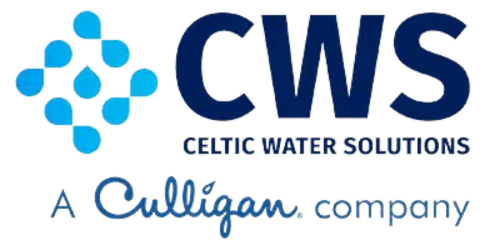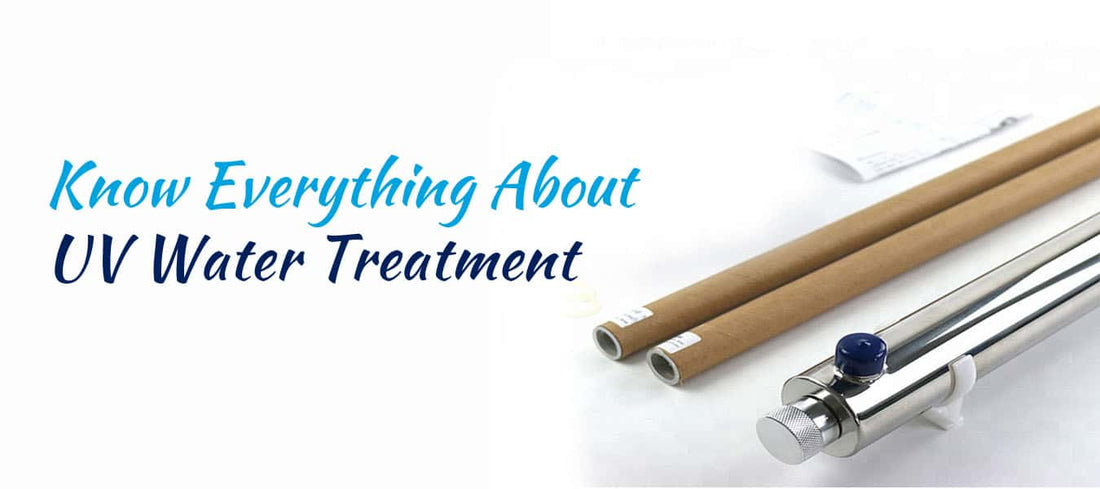The water that reaches you must pass several tests before it can be supplied to homes. Several treatment methods are employed to make it fit for use. Due to some reasons such as leakages or accidents, this water may not be always pure. The risk of biological contamination increases manifold if the source of the water is a private well. Standard water filtration methods such as reverse osmosis systems offer a certain level of protection against bacteria, however, water known to be problematic from a bacteriological standpoint is best treated with UV water filters. Ultraviolet lights have many applications. From tanning to hygiene & infection control, UV lights are employed in many industries, but they hold a special place in water purification and disinfection. Ultraviolet water filtration is a superior way to kill microorganisms in water without the use of any chemicals. They effectively kill 99.9% of bacteria present in your water. Exposure to UV rays renders microorganisms inactive by destroying the DNA that prevents them from multiplying.
What are UV Water Filters?
UV water filters are special lamps that emit ultraviolet light at a specific wavelength (254 nanometers). This produces radiation of much greater intensity when compared to radiation produced by sunlight. The ultraviolet light attacks the genetic code of the microorganisms and in the process making them unable to function, reproduce or cause infection. The effectiveness of this process is dependent on the exposure time, the intensity of radiation, and the quality of water fed into the system. When used alone, UV treatment systems do not change colour, taste, and odour of water.
What Can UV Systems Remove?
Unlike chlorination, there are no biological contaminants that are resistant to ultraviolet light. Most microorganisms such as bacteria, viruses, algae, molds, and cysts can be safely deactivated using UV filters.UV water filtration systems are employed for treatment of:- Coli
- Coliform
- Cryptosporidium
- Giardia
- Salmonella
- Streptococcus
- Hepatitis
- Cholera
- Fungi
- Meningitis
What are the Benefits of UV Water Filtration Systems?
UV treatment systems offer many benefits compared to other water filtration systems in the market.- Unlike other methods of disinfection, such as chlorination, UV systems do not use harsh chemicals to treat water. Chlorine imparts a bad taste to water and changes its chemistry. A high concentration of chlorine can be fatal as it reacts with other elements in water to produce toxic compounds.
- Ultraviolet lights offer a very cost-effective option for water disinfection. Most UV systems require an annual bulb change that doesn’t cost much.
- While RO systems filter out most contaminants from water, they also waste a lot of water. Unlike them, UV filters do not waste any water in the process.
- As no byproducts are produced in the treatment stage, UV filtration is an environmentally friendly system.
- It doesn’t involve any dirty or worn out parts to dispose of, so it offers a hassle-free way to ensure safe drinking water.
Is Ultraviolet Purification Better than Boiling Water?
Historically, water was boiled to kill microorganisms. While it does kill most of the microbes, it has its own set of limitations.- You need to allow the water to boil for a minimum of 20 minutes or more to kill microorganisms.
- There is a possibility that some microorganisms may still be left even after boiling.
- After boiling, the water must be cooled down before consumption. If left unattended, the water may get reinfected.
- Boiling water requires a lot of energy.
- It alters the taste of water.
On the other hand, UV filtration provides instant access to safe drinking water by killing 99.9% of pathogens. It, in any sense, does not change the chemistry of water. As a result, the taste of water remains the same. Additionally, it requires just a minimal amount of electricity to operate, saving you a lot of energy.
What are the Limitations of UV Systems?
UV treatment systems do have some limitations. Perhaps, the biggest one is the inability to remove other contaminants from water such as heavy metals, hardness causing salts, chlorine, or other organic and inorganic compounds. It is effective only for the removal of bacteria and other microbial contamination. That is why UV treatment systems are used in conjunction with other water filters. Secondly, UV water filters are ineffective in cloudy or muddy water. The suspended particles reduce the intensity of ultraviolet light and microbes may even hide under these suspended particles, rendering the UV filter of little use.How do Whole House Ultraviolet Water Filters Work?
There are many manufacturers and models of ultraviolet purification systems, however, most of them have the same basic components.- Controller Unit
- UV Chamber
- UV Lamp
- Quartz Sleeve
UV Ballast or Controller Unit - The controller unit is the brain of the UV treatment system. They may vary in complexity and size, but they all do the same thing - control the electrical output of the UV lamp.
UV Chamber or Reactor Chamber – It is usually a stainless steel housing that contains the UV lamp and quartz sleeve. The reactors may be of axial or boot shape with a variety of sizes depending on the flow rates needed.
UV Lamp – UV lamps create UV-C, which is the wavelength of ultraviolet light that is considered germicidal. All UV lamps contain some amount of mercury, regardless of the model and make. Just like regular light bulbs, UV lamps contain a filament that heats up the mercury and evaporates it to create electric arcs. These electric arcs produce UV-C light at varying intensity levels.
Quartz Sleeve - It is a tube made up of quartz glass that protects the UV lamp. Over time, the sleeve can get clouded due to mineral buildup and must be cleaned during the replacement of the UV lamp. The sleeve also serves the important function of separating the water from electricity and makes sure that water is never in contact with the UV lamp or any other electrical component. Water treatment from a UV purification system is a complex process but the idea is simple. Water runs through the UV chamber where it is exposed to ultraviolet light which kills microorganisms. Looking for a specific UV replacement part? Contact our team at 093 60705 for UV replacement lamps or sleeves.
When to Use UV Treatment?
If you use a public water supply, you’re safe from bacterial contamination. However, due to leakages or accidents, the water supply may be contaminated. In such an instance, a boil water notice is issued. People affected by boil water notice can safely ignore the notice if they are using reverse osmosis filtration systems. On the contrary, if you draw water from a private well, there might be a high chance that your water may be contaminated. The quality of water from your well varies from day to day and from year to year. Heavy rainfall in Ireland affects well water quality. Water that has been safe for many years may or may not be safe tomorrow. The best way forward is to get your well water tested.
If bacteria are detected in your home water, UV treatment would definitely go in along with other filtration media depending on your water test results. As a homeowner, it becomes your responsibility to ensure you have a high quality of water. There are water treatment grants available that cover up to 100% of the costs involved in putting up a new water treatment system or replacing one. Find out if you qualify?
Why is a Pre-Filter Added Before a UV Filtration Unit?
UV systems are only effective if the intensity of ultraviolet light is high. Muddy or cloudy water reduces the intensity of the ultraviolet light, and this makes the UV system ineffective. A 5-micron pre-filter is generally added before feeding the water into the UV filtration system. This clears out the water and increases the lifespan of the UV treatment system.
What’s Involved in the maintenance of UV Treatment systems?
Like all other water treatment systems, UV purifiers also require annual maintenance to perform efficiently. Taking good care of your UV system is the best way to ensure it’s defending you from pathogens. Mercury imparts the germicidal property to UV lamps. Over time, mercury depletes, and a UV lamp will no longer be able to kill microorganisms. UV lamps should be replaced every 12 months. On average, UV lamps have a lifespan of 9000 hours which roughly translates into 375 days. The quartz sleeve that surrounds the lamp must also be cleaned when the lamp is replaced. It is a good practice to check the sleeve when replacing the lamp to ensure it is clean. For better efficiency, the sleeve should ideally be replaced every 2 years. It is critical to replace a UV system’s O-rings as well. These rings ensure a leak-free and waterproof seal. Over time, the rings weaken and may cause leakage. The pre-filter normally lasts for 6-12 months depending on how dirty the water is. In areas where water has a lot of sediments, we recommend a double or triple pre-filter system before the UV purifier. Celtic Water Solutions is one of the leading water treatment companies in Ireland. We specialize in UV water filtration systems and over the years help countless homeowners improve their well water quality and remove bacteria from their water. We’ll be able to assist you in deciding the best water filtration systems for your water. We’re just a call away!

